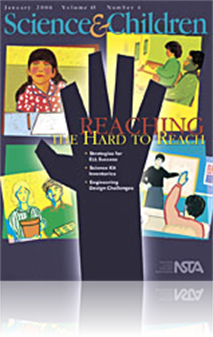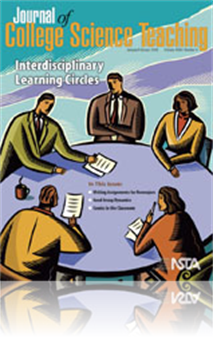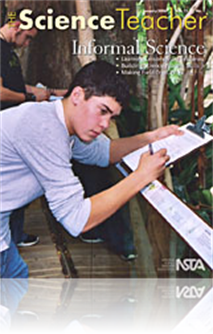All Resources
Journal Article
This section provides notes from the field editor regarding several articles in the journal and offers anecdotes for making science available to all students, regardless of language, ability, and interest....
Journal Article
ELMO Project: Science Instruction for Students
The ELMO (Embedded Learning MOdules) curriculum reform project has designed science curricula for specific nonscience students that fulfill core requirements and demonstrate how science can be engaging and relevant. ELMO students experience science t...
Journal Article
Working side-by-side with museum scientists and other experts in classrooms, in the community, and in the school's adopted watershed, teachers learned high-level technology skills, then involved students in firsthand investigations on water quality, ...
Journal Article
This article examines the construction of science journal texts by three elementary school children identified with special learning needs. These texts are examined to demonstrate how each child differently represented science understanding via a cha...
Journal Article
Inquiry-Based Investigation on the Internet: Sound and the Human Ear
This online exploration of sound energy and the human ear includes an activity where students formulate, justify, and evaluate a number of predictions about sound. The investigation, which is intended for two class periods, or approximately 90 minute...
Journal Article
Commentary: The Coming of Age of Informal Science
The array of informal education configurations is enormous yet all follow the same basic premise of educating through flexible, interesting, and often entertaining methods. And, consistent with the National Science Education Standards, informal educa...
Journal Article
Scope on Safety: Turn up the heat--Safely!
Is burning down your middle school science laboratory one of your biggest concerns due to the heat sources used to conduct experiments? No need to worry--your fears can be extinguished once and for all by following the guidelines outlined in this ar...
Journal Article
Science 101: How can hands-on science teach long-lasting understanding?
Hands-on science activities have long been touted as a great way to motivate students who otherwise might not be all that interested in science. This article discusses the art of tapping into successful discovery learning through structured inquiry....
Journal Article
Teaching Through Trade Books: Crazy for Loco Beans
Do you remember your amazement the first time you watched a Mexican jumping bean hop around in the palm of your hand? Investigating "jumping beans" is a unique way to get your students engaged in scientific inquiry. In this month's column, students...
Journal Article
Career of the Month: An Interview with Respiratory Therapist John D. Hiser
Whether treating newborns for breathing disorders, helping patients with asthma, or diagnosing sleep disorders, respiratory therapists help people breathe easier. Today, as President of the American Association for Respiratory Care (AARC), Respirator...
Journal Article
An infrared (IR) thermometer lab offers the opportunity to give science students a chance to measure surface temperatures, utilizing off-the-shelf-technology. Students will enjoy this inquiry-based activity as they use infrared thermometers to examin...






